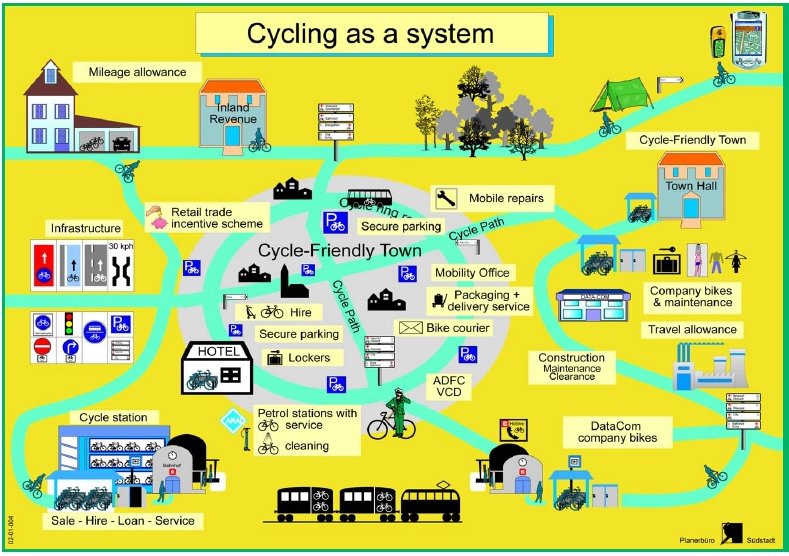VW-BMW initiative to install fast charging for electric cars as an example of the need to build out support infrastructure for biking
The typical range for an electric car charge is 80-120 miles, which makes driving hundreds of miles in a single trip in an electric car pretty inefficient.
The New York Times has a piece, "BMW and Volkswagen Team Up to Expand Network of High-Speed Charging Stations," about a new VW-BMW initiative to install fast charging stations along the I-95 corridor, to support the sales and use of electric cars.
This diagram is from GE and shows the level of integrated infrastructure necessary to support widespread use of electric cars.
In an old presentation about biking, I make the point it took about 60 years to build a complete infrastructure to support automobility: roads; gas stations; repair facilities; maps and signage; parking; motels and hotels to support travelers; restaurants; not to mention car dealerships; financing for car purchases; insurance.
Supporting long distance travel by car was pretty complicated at first.
And at that time, gasoline wasn't seen so much as a commodity, gas station companies developed their brands by providing maps, service, touring information, the promise of clean restrooms, etc. These days gasoline sales have shifted to independent convenience store companies, and the importance of brand for the national companies and gasoline sales has diminished considerably.
This diagram, from an old German National Bike Plan, shows the level of integrated infrastructure necessary to support widespread use of bicycles as transportation.

It's a good illustration of what is necessary to provide to get bicycling as a serious transportation mode up to the usage levels that are possible.
Bicyclists need high quality parking, access to air for tires, safe routes for biking, restrooms, in the summer misting stations would be nice, etc.
Sadly, most bike plans don't take this perspective in outlining a way forward.
Labels: bicycle and pedestrian planning, car culture and automobility, change-innovation-transformation, planned change, social change, transportation planning




0 Comments:
Post a Comment
<< Home